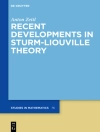The book ‘Problems in Mathematical Biophysics – a volume in memory of Alberto Gandolfi’ aims at reviewing the current state of the art of the mathematical approach to various areas of theoretical biophysics. Leading authors in the field have been invited to contribute, having a strong appreciation of Alberto Gandolfi as a scientist and as a man and sharing his same passion for biology and medicine, as well as his style of investigation. Encompassing both theoretical and practical aspects of Mathematical Biophysics, the topics covered in this book span a spectrum of different problems, in biology, and medicine, including population dynamics, tumor growth and control, immunology, epidemiology, ecology, and others. As a result, the book offers a comprehensive and current overview of compelling subjects and challenges within the realm of mathematical biophysics. In their contributions, the authors have effectively conveyed not only their research findings but also their peculiar perspective and approach to problem-solving, dealing with oncology, epidemiology, neuro-sciences, and biochemistry. The chapters pertain to a wide array of mathematical areas such as continuous Markov chains, partial differential equations, kinetic theory, applied statistical mechanics, noise-induced transitions, and many others.
Inhoudsopgave
– Controlling the spread of an epidemic in agriculture: the case of Xylella fastidiosa. A research project.- Predicting and explaining with models: A few remarks on Mathematical Immunology.- A scenario-based study on hybrid PDE-ODE model for Cancer-on-chip experiment.- The Effect of Substratum Stiffness and Stochasticity on Cell Reorientation over a Stretched Substratum.- Kinetic and macroscopic equations for action potential in neural networks.- Mechanics-Based Models to Predict the Alignment of Cells on a Cyclically Stretched Substrate.- Modelling of Cancer Stem Cell Driven Solid Tumors.- Optimal strategies for pathological epidermis:the optimal control of basal cell dynamics.- On the qualitative behaviour of oscillating biochemical systems: the stochastic approach.- What is a good model?.- Within-host and between-hosts epidemic dynamics: a journey with Alberto.- Diffusion Phenomena on Metric Graphs.- Challenging age-structured and first order transition cell cycle models of cell proliferation.
Over de auteur
Alberto d’Onofrio (M.Sc. in Electrical Engineering, Pisa University, 1993; Ph.D. in Medical Computer Science, Rome ‘La Sapienza’ University, 2000) is Senior Researcher at the ‘Mathematics, Informatics and Geosciences Department’ of Trieste University, Italy. Previously, he has been at the ‘European Institute of Oncology’ as Group Leader in ‘Systems Biomedicine’ (2009-2014), researcher (2000-2008), and postdoc (2000-2002); at the International Prevention Research Institute, Lyon, as Directeur de Recherche (2014-2020). He has also been visiting Professor at the ‘Mathematics and Statistics Department’ of Strathclyde University (2017-2020). A pioneer of behavioral epidemiology of infectious diseases, his research interests lie at the interface between mathematical, theoretical and computational biophysics. He has published 148 scientific papers, edited 5 books for Springer and directed 3 international conferences. His current Google Scholar H-index is 45. Alberto d’Onofrio and Alberto Gandolfi were friends and collaborators. They co-wrote 14 papers, coedited 2 Springer books and co-directed an international Conference.
Antonio Fasano (MSc in Physics at Florence University, 1966) is currently Emeritus Professor at University of Florence (since 2011), Scientific Director at FIAB, a company producing electromedical devices (since January 2013). Previously, he has been full professor of Analytical Mechanics at the Universities of Bari (1975-78) and of Florence (1978-2011). He has been teacher in advanced courses in Italian and foreign Universities worldwide. He has organized many international Conferences on Applied Mathematics, and directed many research contracts in pure and applied mathematics, as well as industrial research contracts (oil transportation, polymers, glass, food industry, steel, geothermal fields). He is member of the Accademia Nazionale dei Lincei, of the Accademia di Ingegneria e Tecnologia, and of the Accademia Toscana di Scienze e Lettere. Founding member and Past President (1991-1992) of the European Consortium of Mathematics in Industry. His research focuses on many areas of industrial and biomedical interest. Author of several international patents concerning electromedical devices. He is also active in History of Medicine, and in writing Fiction.
Federico Papa is Researcher at the Institute for Systems Analysis and Computer Science ‘A. Ruberti’ (IASI) of the Italian National Research Council (CNR). He graduated in Biomedical Engineering at ‘Sapienza’, University of Rome in 2009 and he received the Ph D in Systems Engineering from the same institution in 2012. He has been a researcher fellow of the IASI-CNR for six years (from 2012 to 2018), working with the Biomathematics research group. He won a regular position at IASI-CNR in 2018, joining the research group in Mathematical modeling in biomedicine. His research focuses mainly on: Mathematical Biophysics; Mathematical Oncology; Mathematical Epidemiology; Systems Biology; Dynamic System Identification and Filtering; Optimal Control Theory.
Carmela Sinisgalli is currently Senior Researcher Scientist at the Institute for Systems Analysis and Computer Science ‘A. Ruberti’ (IASI) of the National Research Council of Italy. She received her Ph D in Systems Engineering from the University of Rome ‘Sapienza’ developing part of the thesis work at IASI under the guidance of Dr. Bertuzzi and Dr. Gandolfi who then led the Biomathematics research group. After some years working in industry on automated systems for signal and image processing, she joined IASI taking up a researcher position in the area of mathematical modeling in biology and medicine. The research activity mainly concerned the formulation and numerical simulation of dynamical models of structured population growth, particularly of tumor growth and treatment and more recently of tumor invasion and angiogenesis.












